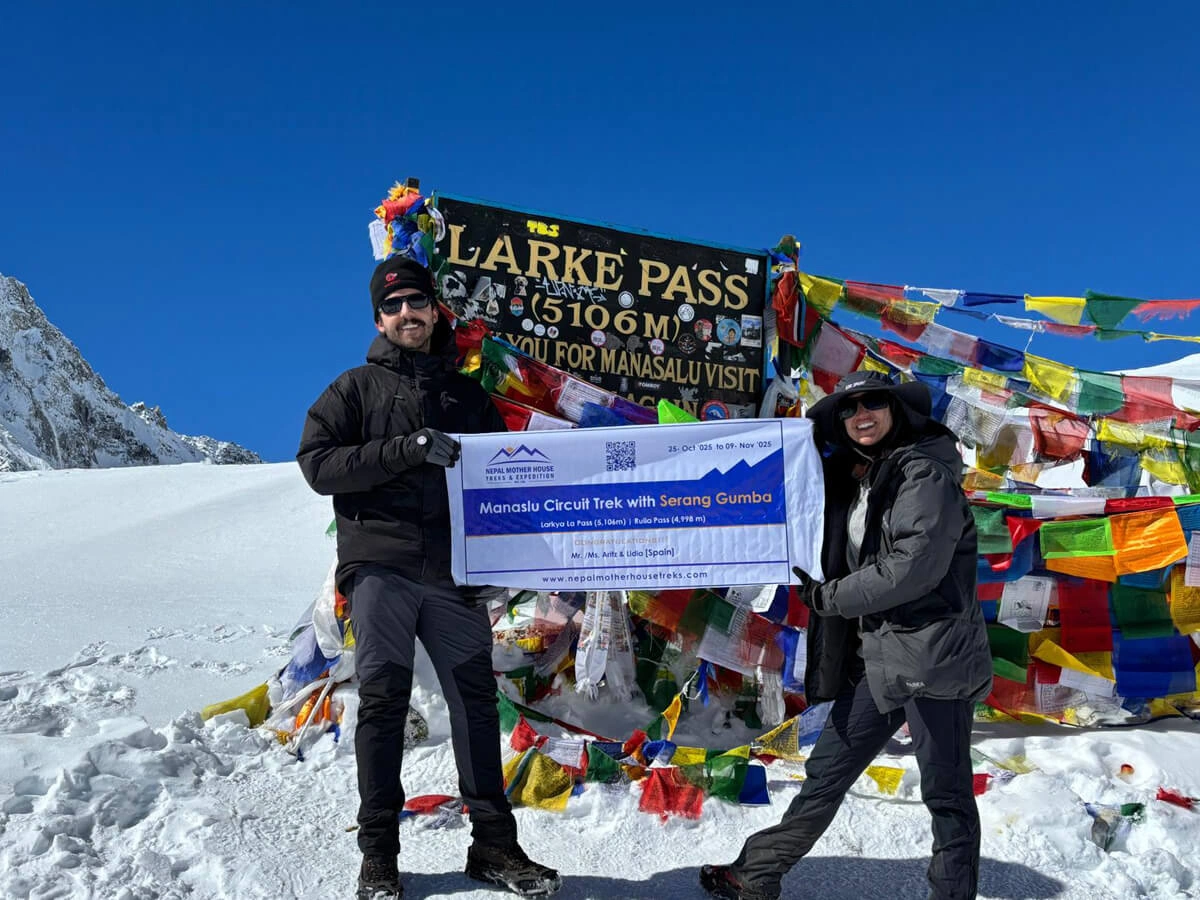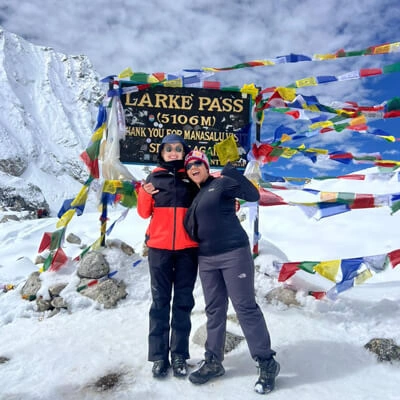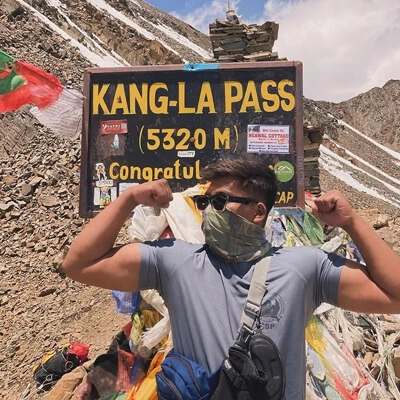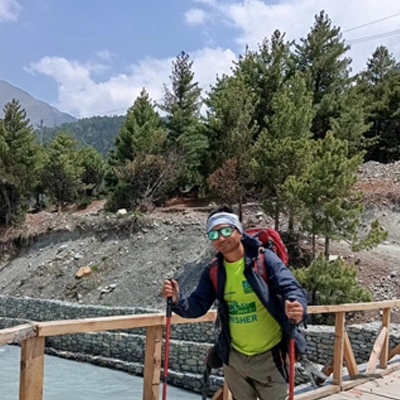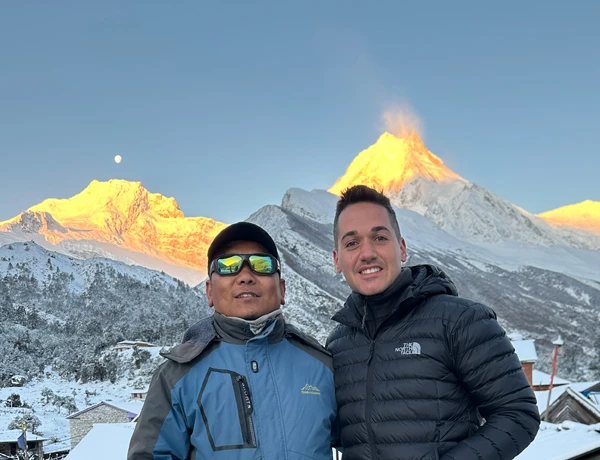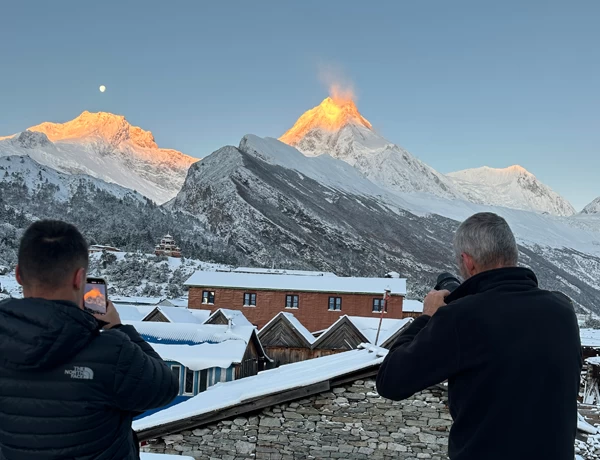The Manaslu Circuit Trek with Serang Gumba is an incredible excursion that takes you over the immaculate locations of the Manaslu region. For those looking for adventure as well as peace, this journey combines the venerable Manaslu Circuit Trek with a spiritual retreat at Serang Gumba.
With Serang Gumba, set off on a voyage to discover the magical beauty of the Manaslu Circuit Trek, where breathtaking scenery, enchanted Buddhist gumbas, rich culture, and exclusive species await. This isolated and less well-known trip in Nepal offers adventurers a unique and unexplored experience.
The breathtaking views of snow-capped mountains, immaculate valleys, and tumbling waterfalls will enthrall you as you negotiate the Manaslu region's tough paths. The trail passes through traditional villages where you may engage with friendly people and truly experience the local way of life.
Discovering Buddhist gumbas, ancient monasteries with treasures and artifacts lasting centuries, is a highlight of the Manaslu Circuit Trek. Here, you could witness monks performing their prayers and learn about the local spirituality and customs.
The Manaslu Conservation Area is home to a diverse range of species, such as red pandas, Himalayan tahr, and the elusive snow leopard. Specifically, the Himalayan Thar comes to play in the grounds of the Serang Gumba, like a pet goat. The great variety and unspoiled landscape all around will astound nature enthusiasts.
Discover the hidden treasure of the Manaslu Circuit Trek with Serang Gumba—an amazing trip combining natural beauty, cultural immersion, and a little spirituality—off the usual route.
The significance of Buddhist Gumbas in the Manaslu area is profound.
The Manaslu area, primarily characterized by its ancient Buddhist gumbas, offers a wealth of spiritual heritage. For the nearby people, these monasteries—often perched on cliffs or tucked away in calm valleys—form both religious sanctuaries and cultural icons. Gumba, an essential Buddhist practice, provides a place for both monks and laypeople to practice meditation, pray, and study holy texts. Trekkers and pilgrims looking for spiritual enrichment center on their architectural beauty and calm atmosphere since they inspire reflection and peace.
Among the most famous gumbas around the Manaslu Circuit is the Serang Gumba, a location that captures the core of Buddhist ideas and practices. The melodic chants of monks greet visitors to the Gumba, a sound that permeates the peaceful surroundings. Adorning the walls, the complex murals and thangka paintings chronicle the life and teachings of the Buddha, therefore enabling guests to acquire an understanding of the rich fabric of Buddhist tradition. The centuries-old relics and artifacts housed at the Gumba also give a physical link to the spiritual past of the area.
Moreover, the preservation of Manaslu's native customs and culture depends much on the gumbas of that area. They provide venues for customs, celebrations, and gatherings between communities, therefore strengthening the bond among the residents. Along with residents, the yearly celebrations at these Gumbas draw trekkers and visitors eager to see the colorful presentations of dance, music, and religious events. This relationship between the Gumbas and society emphasizes the need for these spiritual locations to preserve the cultural identities of the people living in this isolated area of Nepal.
Why Do I Visit Serang Gumba during the Manaslu Circuit Trek?
Visiting Serang Gumba during the Manaslu Circuit Trek gives hikers a unique blend of cultural immersion, spiritual enrichment, and natural splendor.
Incorporating a visit to Serang Gumba extends your trekking experience by offering the following:
Spiritual Significance:
The Kyimolung Valley, home to Serang Gumba, is regarded as one of the four hidden valleys (beyuls) blessed by Guru Padmasambhava, making it a site of tremendous spiritual potency.
Enjoy Nature's Tranquil Surroundings:
The monastery's distant position provides a calm retreat, allowing trekkers to ponder and recuperate amidst serene natural beauty. Experience stunning vistas of snow-capped peaks, beautiful rivers, terraced farmland, and lush forests.
See wildlife and vegetation.
Serang Gumba is placed in the lap of the Shringi Himal as an isolated region. The monastery, located in the middle of the rhododendron and alpine forest, is home to various Himalayan animals, including the Himalayan wild goat known as Jharal or Naur, musk deer, pika, and snow leopards. One can find the wild goat as a pet animal in the monastery courtyard.
See the daily activities of monks, join in meditation sessions, and go to prayer meetings to provide a unique window into monastic traditions. See traditional Buddhist ceremonies and interact with resident monks to learn more about regional customs and spiritual practices.
Discover ancient art and architecture by appreciating Thangka paintings, the rich cultural legacy of the area reflected in traditional Tibetan architecture.
Additionally, a visit to the Serang Gumba is perfect if you want to avoid packed trailers. A few other hikers, including you, have visited this spot.
The Manaslu Circuit Trek includes a visit to Serang Gumba.
From simple tea shops to more cozy lodges, the Manaslu Circuit's accommodation range gives trekkers choices. Mostly, you will be staying at a teahouse with a common bathroom and a twin, double, or triple bedroom. But during the peak season, you may need to share a room with some other trekkers, especially at Dharmashala. The night before the Larkya La pass, I need to share a room with some other trekkers because mostly they have dormitories. If you're searching for a private room for a couple, you can choose from a variety of options. Houses have attached bathrooms with luxury amenities, too. After a hard day on the trek, most settlements provide guesthouses where visitors may relax with a warm dinner and a nice bed. The kindness of the local hosts makes for a remarkable stay, even if the facilities are basic. Trekkers should also be ready for basic inconveniences since some isolated places can have restricted running water and electricity. Meal planning for meals and lodging ensures a better trekking experience, allowing trekkers to focus on the breathtaking surroundings.
Looking into the Manaslu Circuit Trek's unique culture
The culture along the Manaslu Circuit Trek is a rich tapestry woven from old customs, colorful celebrations, and the daily life of the people living in this breathtaking area. Trekkers will come across a range of ethnic groups as they negotiate the difficult paths, including the Gurung and Tibetan populations, each with distinct customs and ways of life. The way the residents treat guests—often sharing tales of their history, traditional crafts, and gastronomic pleasures—creates a fascinating journey for anyone trying to grasp the local way of life.
The strong link of the Manaslu area's civilization to Buddhism is among its most fascinating features. The daily activities of the residents clearly show the effect of this spiritual practice on their art, architecture, and behavior. The prayer flags flanking traditional homes gently flap in the breeze, and the sound of residents spinning prayer wheels accompanies their daily activities. People celebrate the Tibetan New Year, Losar, with immense fervor, showcasing traditional dances, music, and cuisine. These energetic festivals provide hikers a chance to interact with the local way of life and participate in the celebrations, therefore promoting a closer respect for the legacy of the area.
The Manaslu region's artists also specialize in traditional crafts, ranging from handmade metalwork and rugs to outstanding wood carvings. Trekking around the villages, guests may see the talented artists working and even buy handcrafted mementos that capture the cultural character of the area. Participating with these artists not only helps the nearby businesses but also lets trekkers bring a bit of the special culture that marks the Manaslu Circuit Trek home.
Encounters a Wildlife Manaslu Circuit Trek with Serang Gumba.
For those who enjoy the natural world, the Manaslu Conservation Area is a haven with a wonderful variety of species living in its several ecosystems. Trekkers have the chance to see a range of species as they travel the Manaslu Circuit; some of them are rare and elusive. The area boasts the magnificent snow leopard, a solitary predator distinguished by amazing agility and concealment. Many people have not spotted one of these elusive big cats in their natural environment; hence, the trip is a very remarkable adventure for those who enjoy animals.
Apart from snow leopards, Himalayan pikas, and musk deer, the Manaslu area boasts other amazing animal species, such as the Himalayan tahr, a goat-like species that elegantly negotiates the rocky hillsides. Trekking throughout the verdant woodlands, one could also get a sight of red pandas, distinguished by their striking coats and active demeanor. The variety of avian species present will thrill birdwatchers: the vibrant Himalayan Monal, Nepal's national bird, and many migratory birds that pass through the area during particular seasons. Every day on the hike allows one to commune with the surroundings and see these species in their native habitat.
The Manaslu Conservation Area's unusual richness is evidence of the value of regional conservation initiatives. From alpine meadows to subtropical forests, several habitats offer vital ecosystems for the survival of different species. To maintain this fragile equilibrium, trekkers are urged to treat the surroundings with respect and engage in ethical travel. Following rules and supporting local conservation projects will assist adventurers in helping to ensure that the wonderful species of Manaslu will always flourish for the next generations.





